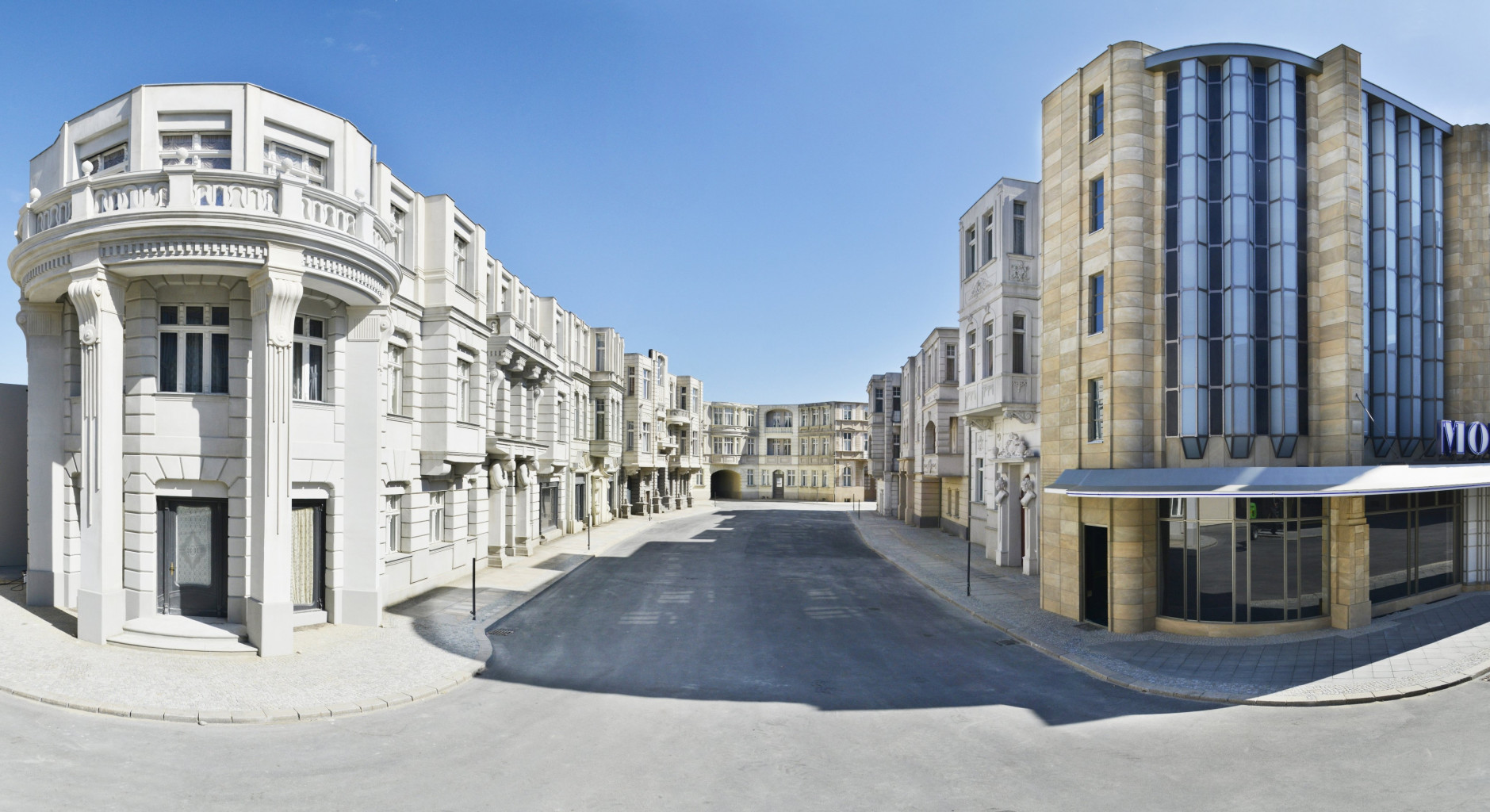Studio Babelsberg (Potsdam, Germany)
Studio Babelsberg (Potsdam, Germany)
Studio Babelsberg is the oldest large-scale studio complex in the world. Since 1912 film history has been made here. Countless renowned filmmakers have worked with Studio Babelsberg to create legendary films.
On 12 February 1912, in a glass-house atelier, shooting began on Urban Gad’s silent movie DER TOTENTANZ starring Asta Nielsen..The former factory complex located just outside of Berlin soon became a vibrant centre of the silent film production producing classics such as THE GOLEM (1915) by Paul Wegener and Henrik Galeen, the legendary NOSFERATU (1922) by F.W. Murnau, and Fritz Lang’s DOKTOR MABUSE (1922). Babelsberg was also home to the world’s first movie stars: Henny Porten, Lilian Harvey, Pola Negri and Paul Wegener.
The now called “Marlene-Dietrich-Halle” was built for the large-scale production of ‘the mother of all science-fiction films’ METROPOLIS. Directors such as Fritz Lang or Friedrich Wilhelm Murnau became regulars on the lot and created masterpieces such as DIE NIBELUNGEN (1924), FAUST (1926) and THE LAST LAUGH (1924). A young Alfred Hitchcock worked here as assistant director to learn the trade. Karl Freund revolutionized the international cinematography with the invention of the “unchained camera” technique.
The next chapter in cinema history was marked in Babelsberg in 1929 with the setting-up of the first sound-film studio in Europe, the “Tonkreuz”. MELODY OF THE HEART (1929) by Hanns Schwarz, starring Willy Fritsch, was Germany’s first full-length feature film with sound from start to finish. This was followed up in 1930 with the first screening of Josef von Sternberg’s THE BLUE ANGEL by Josef von Sternberg starring Marlene Dietrich and Emil Jannings.

After the Nazis’ accession to power in 1933, a number of Nazi propaganda films were made under the auspices of the “Ministry for Public Enlightenment and Propaganda.” Filmmakers such as Josef von Sternberg, Fritz Lang, Ernst Lubitsch, Billy Wilder and stars such as Marlene Dietrich would leave Germany to try their luck in Hollywood. During this era, the main task of Babelsberg Studios was the production of entertainment films designed to distract German audiences from war-related difficulties.
After World War II, it didn’t take long before the studio got a new lease on life. The German-Soviet corporation DEFA (Deutsche Film AG) was founded. The studio became the exclusive venue of feature film production in the GDR and soon advanced – with roughly 2,500 employees – to become the largest employer in the region. From 1946 to 1990, the studio saw the production of more than 1,200 feature films and TV films of various artistic and political orientations, including THE COLD HEART (1950) by Paul Verhoeven, THE SUBJECT (1951) by Wolfgang Staudte, TRACE OF STONES (1966) by Frank Beyer, THE LEGEND OF PAUL AND PAULA (1973) and COMING OUT (1989), both by Heiner Carow . In 1976, JAKOB DER LÜGNER became the only GDR film to be nominated for an Oscar.
After the Fall of the Wall and German unification, the studio expanded and pushed forward the internationalization of the site’s production services. Among the films produced in Babelsberg since are THE READER, THE BOURNE ULTIMATUM and Quentin Tarantino’s INGLOURIOUS BASTERDS.
Among the most successful films and series made in Babelsberg are THE INTERNATIONAL (2009), THE GHOST WRITER (2010), UNKNOWN (2011), HANNA (2011), THE GRAND BUDAPEST HOTEL (2014), THE MONUMENTS MEN (2014), THE BOOK THIEF (2013), THE HUNGER GAMES: MOCKINGJAY (2015), BRIDGE OF SPIES (2015), CAPTAIN AMERICA: CIVIL WAR (2016), HOMELAND (2016), A CURE FOR WELLNESS (2016), and many more.
In 2012, Studio Babelsberg celebrated its 100th anniversary.

